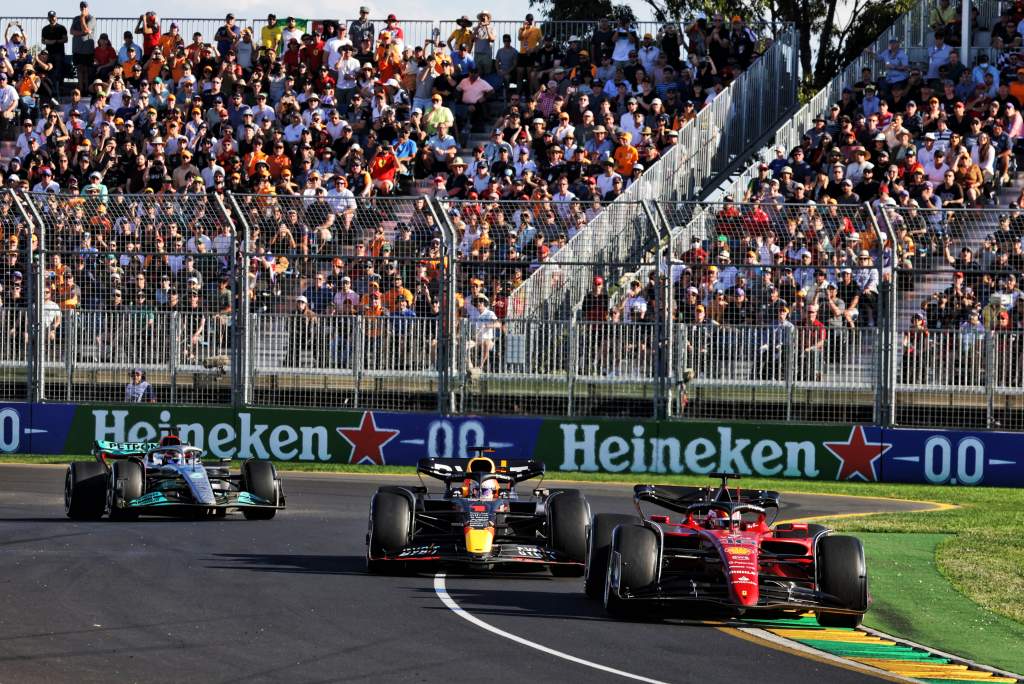Up Next

Formula 1 teams are still adapting to the new-for-2022 aerodynamic regulations. Even without the porpoising problems that every team has faced to some degree or another, the development cycle would not have been significantly different. Porpoising is simply another thing to be wary of when doing your research and development work.
At the top of that tree is the cost cap. You can only spend your money once, so it’s wise not to get too adventurous early on. This has had a big impact on the conservative approach to upgrades we’ve seen so far.
This leads to more time spent researching rather than, as in the past, making bits and throwing them at the car to see what happens. That’s no bad thing as that led to an enormous amount of waste making different gizmos in the hope they would improve the laptime.
As part of that development schedule, you need to look at the complete rear of the car as one. It all works together and you can’t even separate the different downforce/drag level rear wings from that. The fact they need to be effective at cutting drag when the DRS is in use makes it even more difficult.
The central section of the wing above the diffuser is the most important part of the wing when it comes to influencing diffuser performance. If this section is not aggressive enough, the airflow could lose contact with the beam wing and, in turn, the diffuser. Effectively, a shallower rear wing could lose much more downforce than it did in the past when it was simply a standalone component.
The current diffuser rules and the reintroduction of the beam wing, which is critical to how the diffuser and underfloor work, mean these all work hand-in-hand.
The beam wing is a bit like a Gurney flap on the trailing edge of a wing. In this case, it is on the trailing edge of the diffuser. On top of that, you have the rear wing. Any influence on the turning moment of the mass airflow that you can get from that makes everything work just that bit more efficiently.
Then there’s the conglomeration of turning vanes on the inside of the rear brake ducts. These are also very important as they apply the forces they produce directly onto the tyre contact patch.
This means there is no time lag when the suspension is moving, with the load going directly onto the tyre. It also means that this load does not need to be supported by the suspension stiffness. Basically, if you have lots of downforce directly on the tyre, you could run a much softer suspension. Just to show that nothing’s new, back in the early days of wings they were mounted directly on the upright assemblies before this was banned.

While the principles of what you are trying to achieve with your design are similar, there’s always variation from car to car. So let’s have a look in detail at how the top three teams in the constructors’ championship have approached this area of the car based on the specification they raced in the Miami Grand Prix.
FERRARI
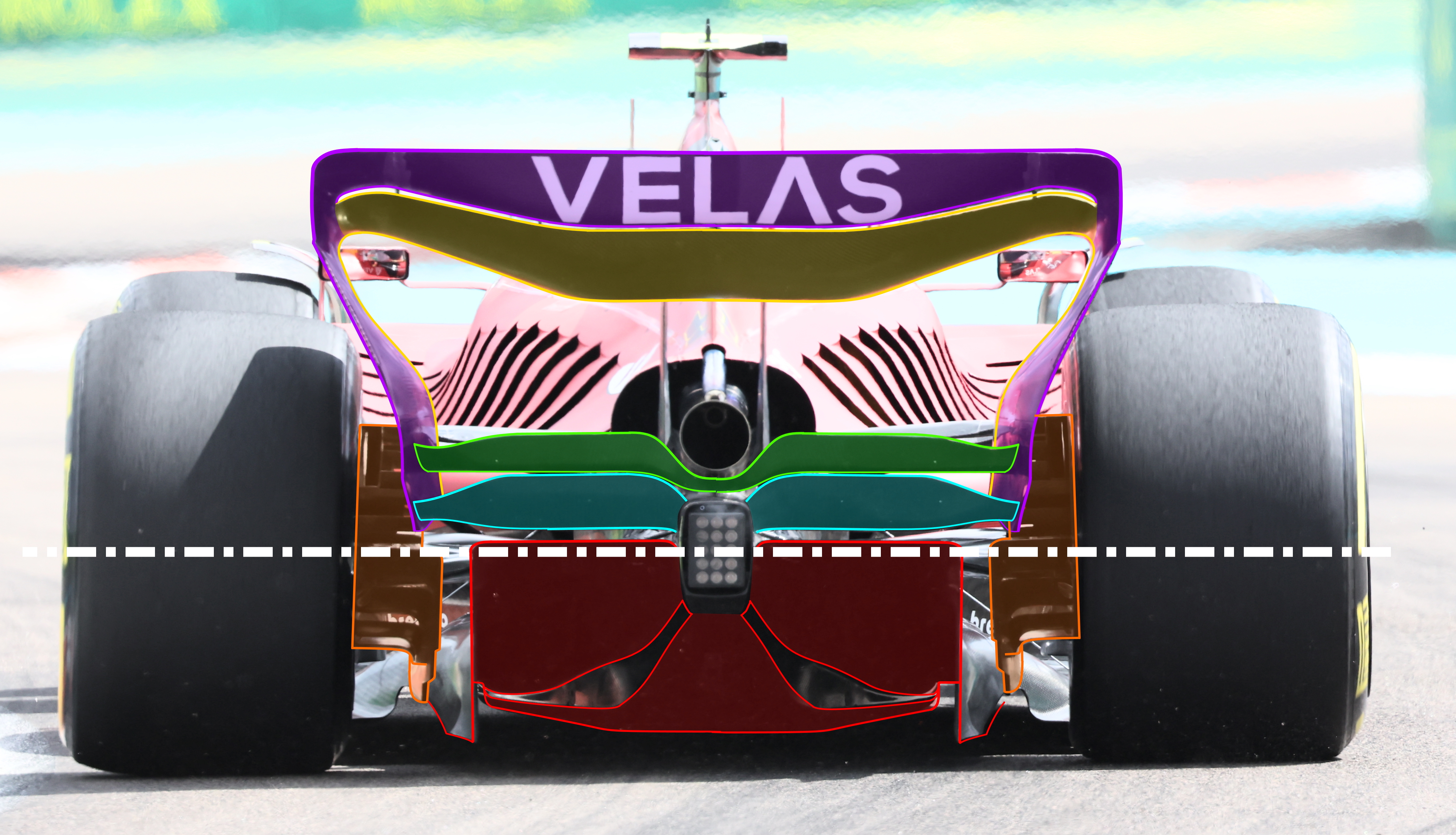
Ferrari started the season with a bang, definitely getting a good handle on its car earlier than most. Other than small details it really hasn’t changed much since Bahrain – although that should change in Spain this weekend – and it’s the old philosophy of ‘if it ain’t broke, don’t fix it’.
The rear end of the Ferrari F1-75 is actually very simple. It has the maximum diffuser outlet area, which is what you would expect.
The beam wing is as aggressive as possible in the area above the diffuser trailing edge. However, I’m pretty sure this could be a little deeper in section in that area, which would work the diffuser harder but possibly increase the drag above its acceptance level. Above that, the rear wing has a deep centre-section spoon shape.
This is all about getting the diffuser, beam wing and rear wing working as one. My only worry here is that when Ferrari reduces the depth of that rear wing centre section for a lower-downforce circuit, will that section of the rear wing lose contact with the beam wing?
The upper wing reduces in camber as it goes outboard; this is the same philosophy as we have seen in the past. Going across its span it is the outboard ends that are the least efficient – that combined with the lack of endplates above the wing’s top surface means that the airflow would also just spill over the sides and not influence the underside flow, which is what you need to produce downforce from this area.
The beam wing also reduces in camber as it goes outboard. The reason for this is that the beam wing in itself is fairly inefficient and the diffuser below cannot extent this far outboard so the wing section in this area is not necessary to work the diffuser harder.
As the rear wing endplates twist outwards, this allows the low-pressure area behind the rear tyre to pull more flow through to fill up this void again, reducing drag and improving the rear wing performance.
Ferrari has used the maximum permitted area for rear-brake turning vanes. The more downforce you get from these, the more stable the rear of the car will be when the suspension is moving, for example under braking.
The shaded areas in the diffuser are the surfaces facing the ground and the non-shaded areas are the vertical walls connecting the lower inner section to the increased height underfloor section.
The intersection of these two surfaces is very important. If the blend radius between them is not sufficient then it can easily lead to airflow separation.
From this view, we can also see the cooling exit and how the top body surface louvres all work with the airflow being pulled through under the rear wing.
All in all, the Ferrari has a very neat and functional rear end, but nothing stands out as groundbreaking. As I said above, if it ain’t broke, don’t fix it and this package obviously works but unfortunately in F1, if you stand still you go backwards. Let’s see what Ferrari comes up with for Barcelona.
RED BULL
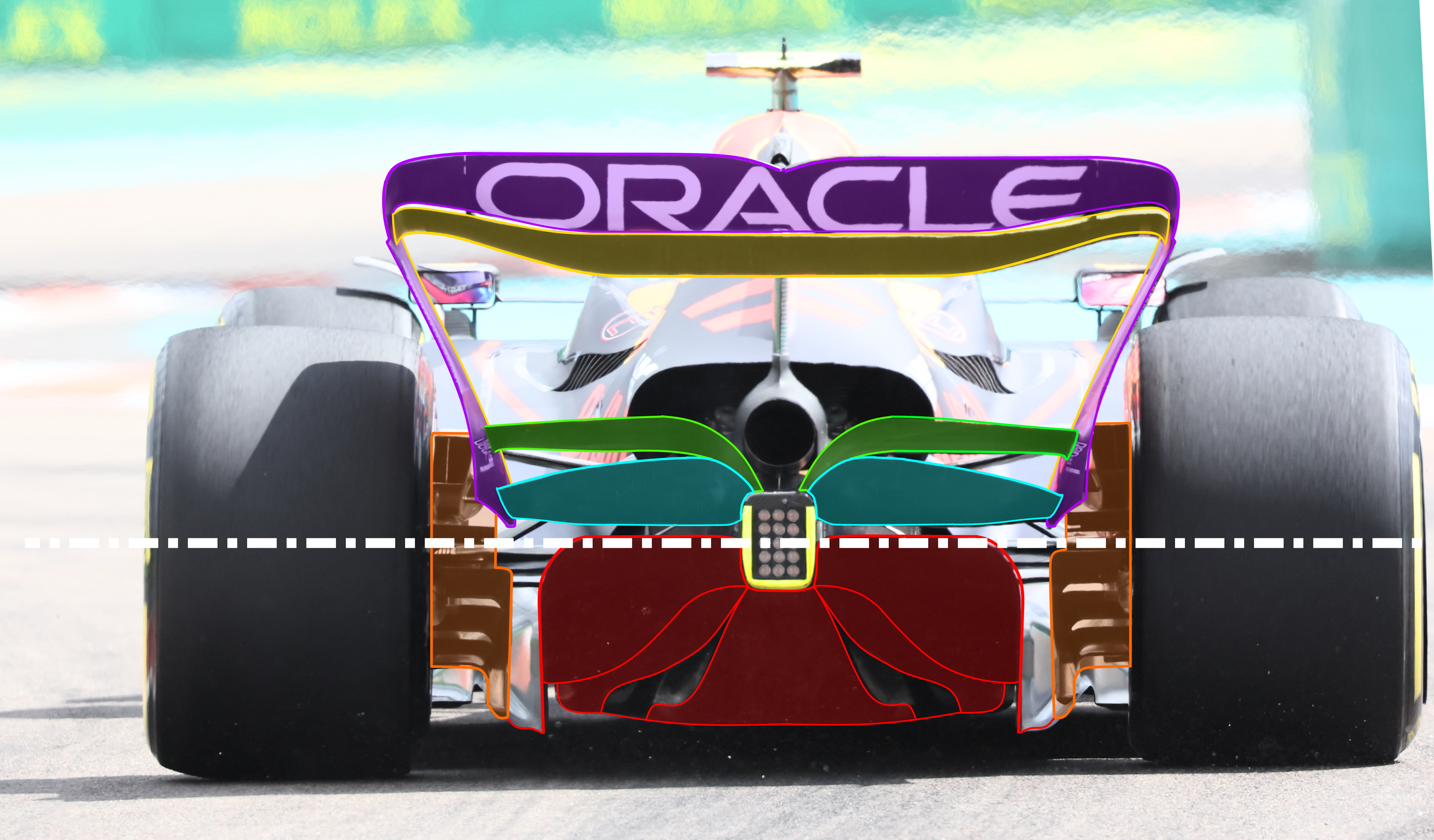
At a glance, the rear of the Red Bull RB18 looks similar to the Ferrari. But as always in F1 these days with such tight regulations, the devil is in the detail.
Again, Red Bull uses the maximum permitted diffuser exit area. But its philosophy is more of a blended surface and you can see the upper, outer corners have a much bigger blend radius.
The double lines where the vertical walls join the upper surface that faces the ground also show the extent of the blending. All of this takes up diffuser volume but reduces the risk of airflow separation.
The beam wing is more of a multi-wing than simply two elements working as one like the Ferrari.
The regulations call for the beam wing to be a maximum of two elements, and in side view they have to fit into a rectangular box that has a defined position. Red Bull has the lower section marked in blue as the diffuser trailing edge trip device.
Then, the upper section of the beam wing is as high as possible and as far forward as this rectangular box allows. This means it works as a standalone component generating an earlier turning moment on the airflow in this critical centre section, which also means that it is as close as possible to the throat of the upper wing so a lower-downforce rear wing will still influence the airflow on this component.
Moving outboard, both reduce in section and angle to reduce drag where that turning moment is not required.
The rear wing has a shallower centre section, so is a lower-downforce component than we see on the Ferrari. It still drops away as it goes outboard.
With new regulations, there are no endplates sticking up above the wing’s top surface, so if you try to work this area too much the airflow on the top surface will just spill over the outer top corners. You want some of this to fill the void behind the rear tyres, but if you try to get more downforce from the wing you will probably end up only getting drag.
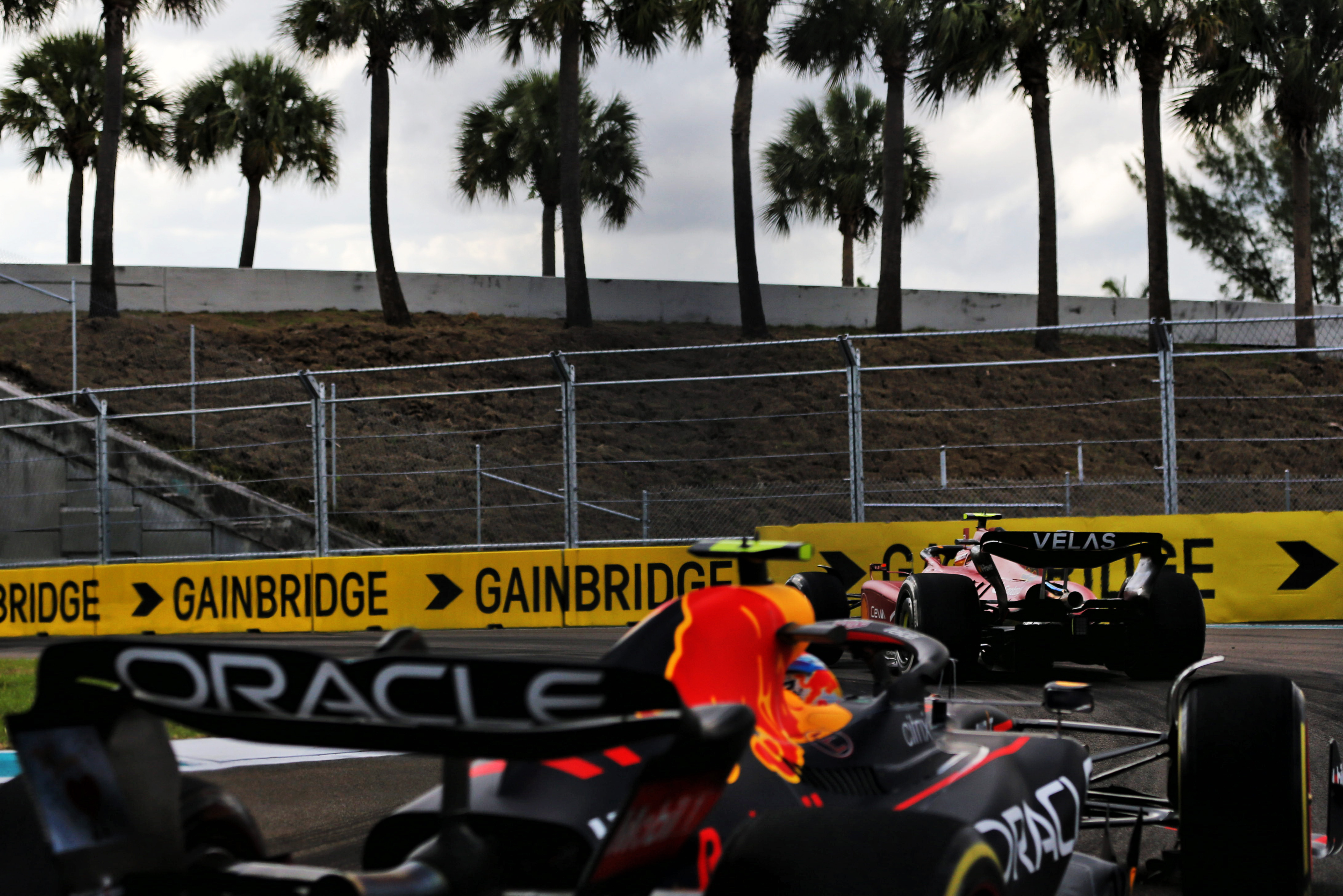
Like Ferrari, Red Bull has used up all of the area allowed with the turning vanes on the inboard surface of the rear brake ducts. These vanes also help manage what is called the ‘tyre squirt’ by picking up the flow that the rear tyre displaces as it rotates onto the track surface. This also helps to seal the vertical sides of the diffuser, so is important to the flow structure around the rear tyre.
Red Bull achieves its cooling requirement by having a larger exit hole out of the rear of the engine cover, and also has some small ducts further forward. It’s perhaps not as elegant as the cooling on the Ferrari, but finding the best cooling exit is all about finding the position on the bodywork that does the least harm aerodynamically.
MERCEDES
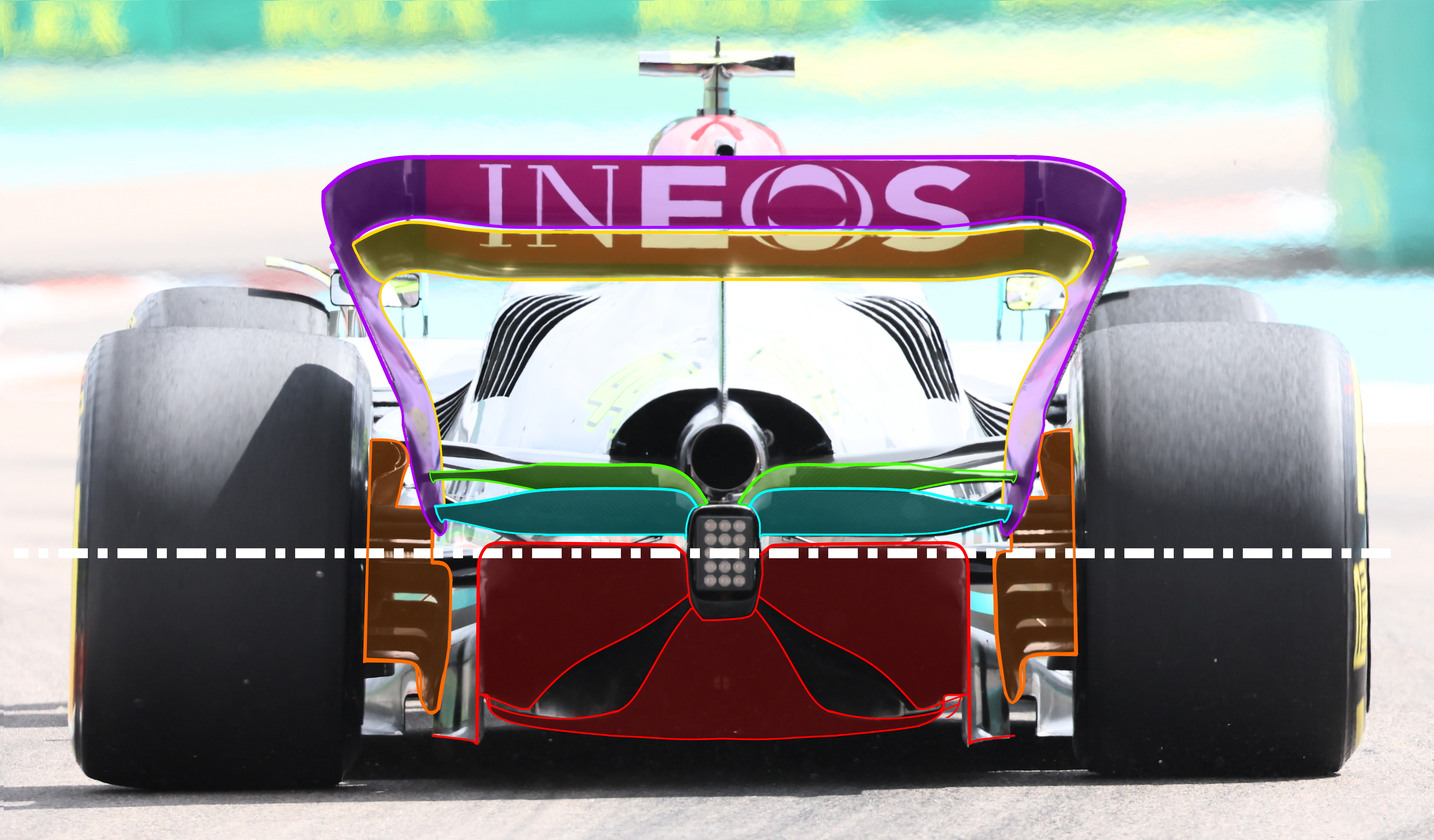
Mercedes has suffered the most with these new regulations. We know all about the completely different ‘zero sidepod’ philosophy, but here we’re focusing on the rear end.
Like Ferrari and Red Bull, Mercedes uses the maximum permitted width for the diffuser. It doesn’t pay much attention to the intersection where the surfaces facing the ground meet up with the vertical surfaces.
As mentioned, it’s easy to get airflow separation where these two surfaces connect up because the speed of the air on these two surfaces is different. If the difference is too much then it can set up a separation bubble that can grow in size very quickly and reduce the effect of the diffuser.
A separation bubble is when you get a small section where the flow just doesn’t go anywhere. It can be from boundary layer build up and it just sits there in a sort of puddle with no energy to go anywhere. If the blend radius gets bigger as you go rearwards, it can reduce the boundary layer build up and increase the risk of this separation bubble happening.
The beam wing was a new addition for Miami and is in line with the objective of working the diffuser top surface harder. But the assembly is not as powerful as on the Ferrari or Red Bull.
The mainplane is smaller in section and the flap is a halfway house between what Ferrari is trying to do, which is make the beam wing as powerful as possible, and what Red Bull wants to achieve, which is to make the two components work separately.
As we all know Mercedes has been suffering from porpoising more than most other teams. This porpoising will be coming from somewhere in the underfloor and as the diffuser is an extension of the underfloor and is the component that makes the underfloor work it needs to be classified as one overall downforce producing device.
Reducing the effect the beam wing has on the diffuser will reduce the effect the diffuser has on the underfloor, which will reduce the airflow speed through the throat of the diffuser. This could reduce the porpoising because you are not working the airflow in the underfloor as hard, or it could increase it because you are not working the airflow as hard – the jury is still out on this.
As an example, if you have a wing that is struggling with airflow separation then reducing its angle will reduce that separation but give less downforce. However, fitting a gurney flap across its trailing edge can cure the problem and give you more downforce. As I say, the jury is still out on which way to go with this.
The outboard end reduces in angle, ending up in a very small section where it joins the endplates.
Mercedes also uses the maximum permitted area for its brake duct vanes for reasons explained above.
Mercedes started the season with what visually appeared to be a very high-downforce rear wing that was then hacked back when lower downforce was required. By hacking back the trailing edge of the upper flap, it meant the throat of the wing stayed in the same position relative to the beam wing but with the shorter flap it didn’t work as hard. It also meant that the DRS influence was reduced because the flap was a shorter chord. In Miami, Mercedes introduced this new version of rear wing.
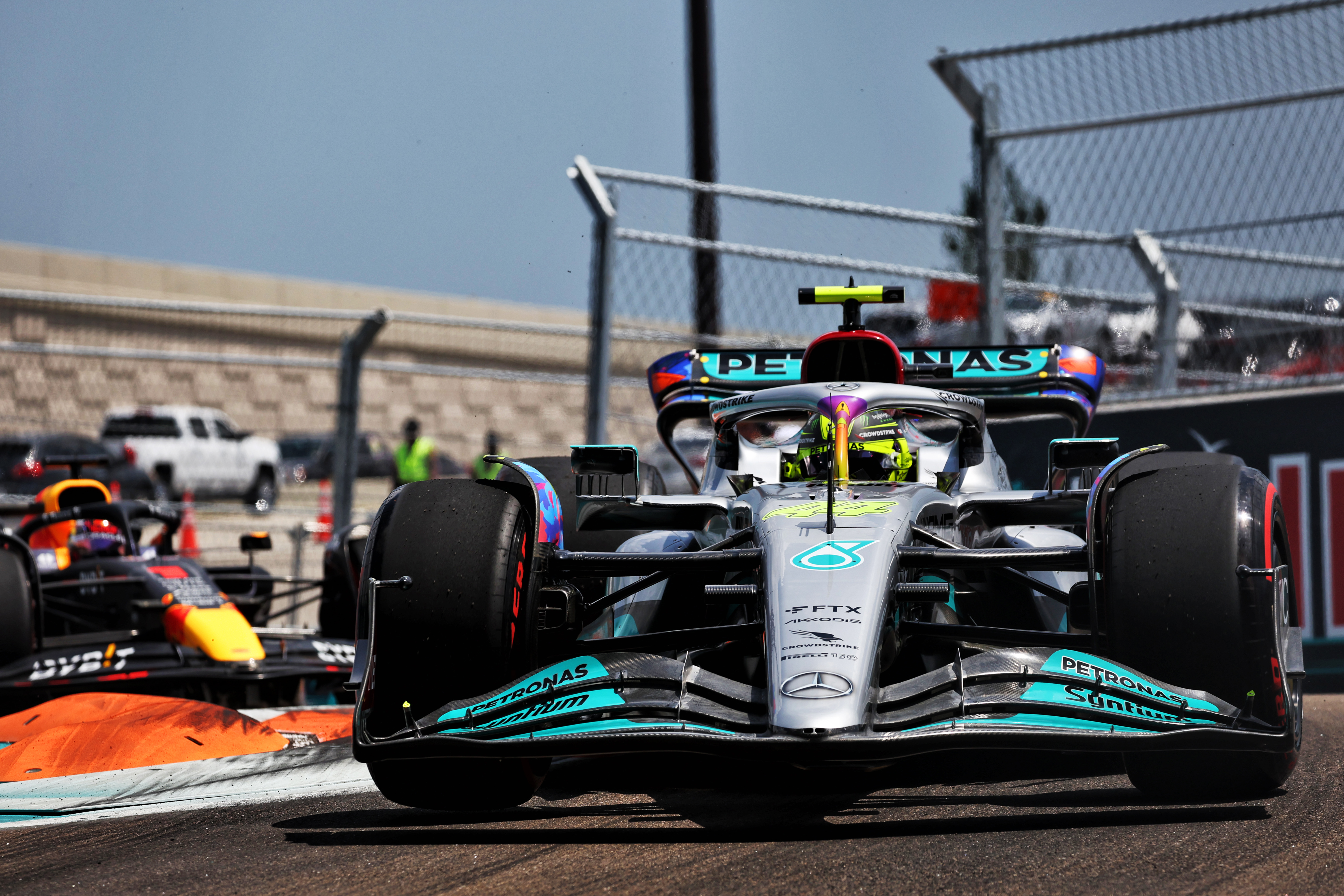
I’m not saying it’s lower downforce because Mercedes has gone a slightly different route to the other two frontrunning teams. Yes, Mercedes has reduced the depth in the centre section but it’s also increased it going outboard. This means that it has a much more parallel cross-section span-wise.
This new version means that the throat section of the upper rear wing is now further away from the beam wing so its influence on the beam wing and in turn the diffuser will be reduced. Also, I still can’t see what you get out of those outboard ends of the wing by having more cross-section depth as I believe the flow on the top surface will simply spill off it, meaning that there is reduced flow making the undersurface work.
The Mercedes cooling package has been one of the things that has allowed it to come up with the zero sidepod concept. Here, we can see that its rear cooling exit is similar in size to the Ferrari and much smaller than the Red Bull.
But Mercedes also has some exit louvres running along the top corner of the engine cover. So if you were to add up the cooling area of all those outlets, I don’t think there would be much difference in the overall opening of all three cars.
CONCLUSION
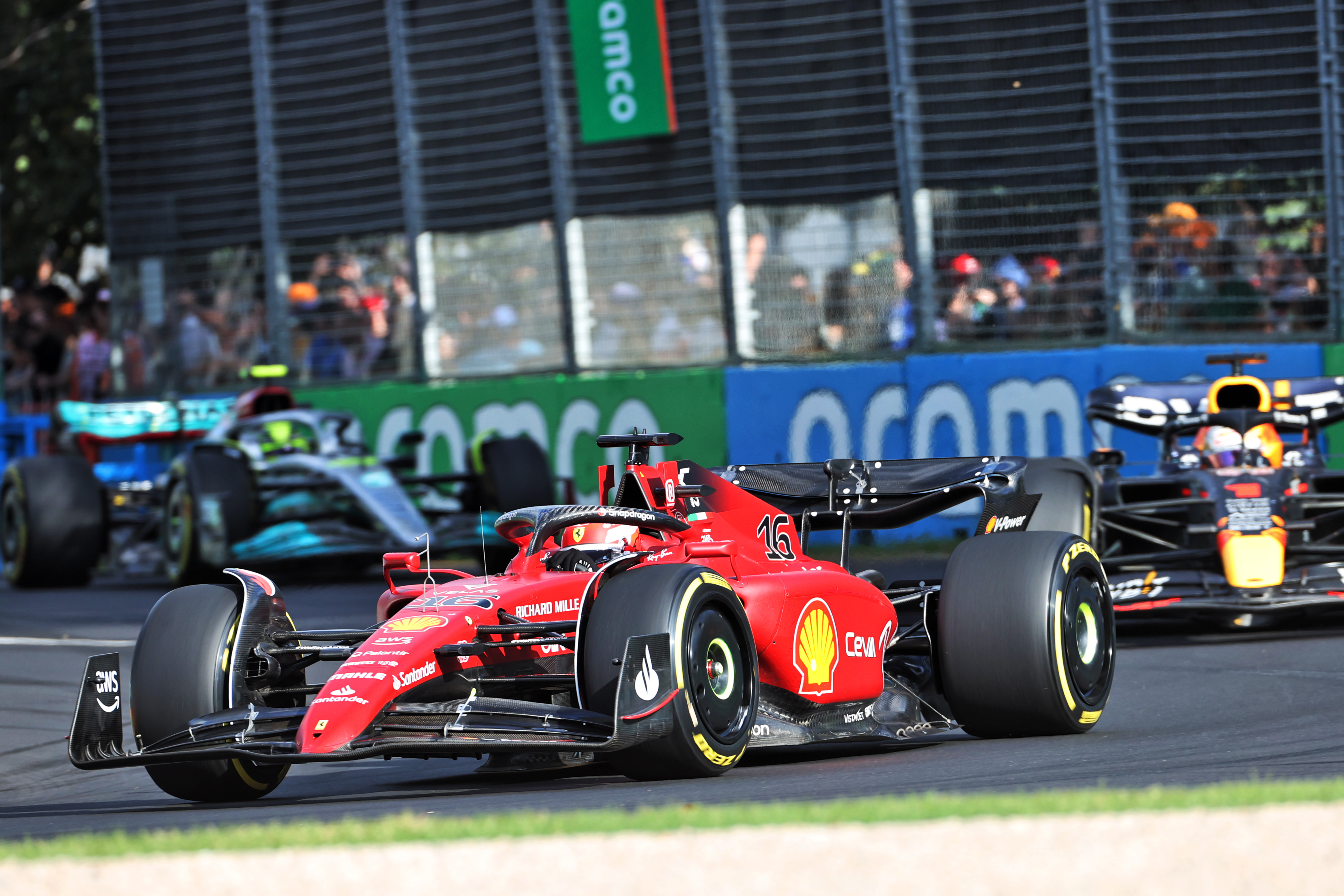
From the rear views, you can see that the Ferrari visibly probably produces more rear wing downforce but not as efficiently as the Red Bull.
As you would expect from Adrian Newey and his team of engineers, the detail on the Red Bull is second to none. Every nook and cranny is optimised and as I said above the devil is in the detail.
As for Mercedes, it’s easy to criticise and that’s not what I’m here to do, but I don’t see anything out of the ordinary here. After all, the rear of the car is crucial to making the rest of it work. To me it looks like they have gone about trying to overcome their porpoising problem by reducing the effect the rear wing and beam wing has on the diffuser, but as the diffuser is the most efficient mechanism for producing downforce I don’t really see the reason for going about it in that direction.
You can’t push air over the car, otherwise, it just goes where it wants to. You can only pull it over and through the car, and what you see at the rear is the mechanism that makes that all happen. A good example of what I’m saying is the radiator exits; they need to point rearwards to allow the flow to get pulled through the car, the rest of the car is exactly the same.
Broadly speaking, we see two different approaches here – Red Bull and Ferrari at the extremes, with Mercedes somewhere in between.
Let’s see what, if anything, changes in this area in Spain and whether that indicates one approach or the other is the best overall – or if both or even all three are just equally effective ways of skinning the same cat.


